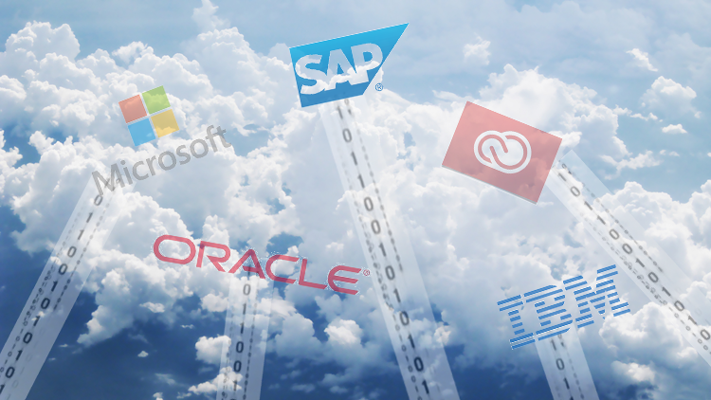
3 Fatal Errors Moving Software to the Cloud
Unfortunately the reality is that software and IT asset managers can't always believe what their cloud vendors are telling them, says Sandi Conrad, Director at InfoTech Research Group, especially when it comes to claims of uptime, ease of data transfer, and usage metrics.
Conrad has seen many of the mistakes software and compliance managers make when their IT departments adopt cloud technologies—over and over again. She's identified the top three errors that even the sharpest software managers make when transitioning to the cloud.
"It really comes down to treating cloud vendors the same as you would if you were keeping the software in house," says Conrad. "Especially with successful vendors, the assumption is that it 'everyone else is doing it, so they must be happy.' Making assumptions that other customers are getting everything that you need is a big mistake."
Conrad is discussing how compliance managers can guard against making these three (and more) of the fatal errors when moving to the cloud during her 2015 IBSMA SAM Summit session on June 8. As a research analyst and certified software manager, she has extensive experience in software licensing and asset management. As she describes these mistakes, it's clear that they boil down to making bad assumptions.
1. Data cannot always be easily transitioned from one tool to another.
No matter what the cloud vendor tells you, do not assume that you'll be able to easily move data from your on-premise applications to the cloud application and then back again. Conrad advises asset managers to always find out what format their data is in when it's in a cloud application, regardless of the type of solution.
"How will you get access to that data? How will you move it back in house?" asks Conrad, who advised asset managers to get the answers to these questions before signing any vendor contracts.
She also believes that customers should always have an exit plan that will enable you to transition your data from the cloud to an alternative solution.
"If you've got a good exit plan, and the vendor is aware of it, that vendor makes more of an effort to make sure you don't put that plan into play," she says.
2. You won't automatically get the metrics you want for each application.
Conrad advises against taking the vendor's claims about their metrics at face value—assuming you'll simply get the metrics you want is the second big mistake compliance managers make.
"It all depends on each vendor and what they're set up to monitor. So you need to understand how they're coming up with metrics, especially availability, access speeds, and other issues important to your stakeholders," says Conrad.
Many of the larger vendors are more transparent about their metrics, but smaller vendors with fewer clients might not be as honest. Before you enter into an agreement, ask not only what metrics the vendor can provide but also how they measure them. Remember, adding metrics to accommodate your stakeholders won't be a priority after you've signed the contract.
3. Availability doesn't always mean available.
In Conrad's experience, some cloud vendors will vaunt their five nines or four nines of availability without fully explaining their promises of uptime to the customer.
"Unplanned outages are just one aspect of downtime," reminds Conrad. "Planned outages still count as downtime, so calculate the planned outages when determining availability."
She shares an anecdote to remind asset managers to really dig deep into a vendor's promises. Some organizations will include system error messages that are returned when you ping the server as uptime, even though, obviously, the system isn't truly available to handle your workload.
Despite these mistakes, Conrad is quick to point out that she sees "a lot of value to cloud services." The key to unlocking that value is due diligence.
Learn how to avoid these mistakes—and other common problems—when moving your IT organization to the cloud from Conrad at the 2015 SAM Summit in Chicago on June 8.
View the full 60-plus session agenda including the new Microsoft Track at SAMSummit.com.
Additional reporting by Leslie T. O'Neill.
Published by ECP Media LC
P.O. Box 1549 |
Ann Arbor, Michigan 48106-1549 U.S.A.
ECPweb.com |
Office and fax: 1.734.930.1925
ECP articles are provided to IBSMA by arrangement with ECPweb.com.
Terms of use
This publication is designed to provide accurate and authoritative
information regarding the subject matter. Neither the publisher nor the
author(s) is offering legal, accounting or tax advice. Although care has
been exercised and every attempt made to verify the information in this
publication, neither the publisher nor the author(s) is responsible for
errors or omissions. Neither the publisher nor the author(s) is
affiliated with nor endorsed by any organization listed here or by any
subsidiary company. Trademarks are the property of their respective
owners. ITIL® is a registered trademark of the United Kingdom's Office
of Government Commerce. The Certified by ECPweb.com logo is a licensed
trademark of ECP Media. The publication may be printed for personal use.
The publication MAY NOT be printed for distribution in a public or
private venue (i.e., conferences, trade shows, direct mailing, etc.).
© 2015 ECP Media LC (ECPweb.com) No part of this publication may be
reproduced, stored in or introduced into a retrieval system, or
transmitted in any form, or by any means (electronic, mechanical,
photocopied, recorded or other) without the prior written permission of
both the copyright owner and the publisher.
IT IS ILLEGAL TO DISTRIBUTE OR RESELL THIS PUBLICATION IN ANY FORM
WITHOUT THE EXPRESS WRITTEN CONSENT OF THE PUBLISHER. THIS PUBLICATION
IS LICENSED FOR PERSONAL USE. IN ADDITION TO LEGAL ACTION, THE ORIGINAL
PURCHASER MAY BE CHARGED FOR ALL ILLEGAL COPIES. |

